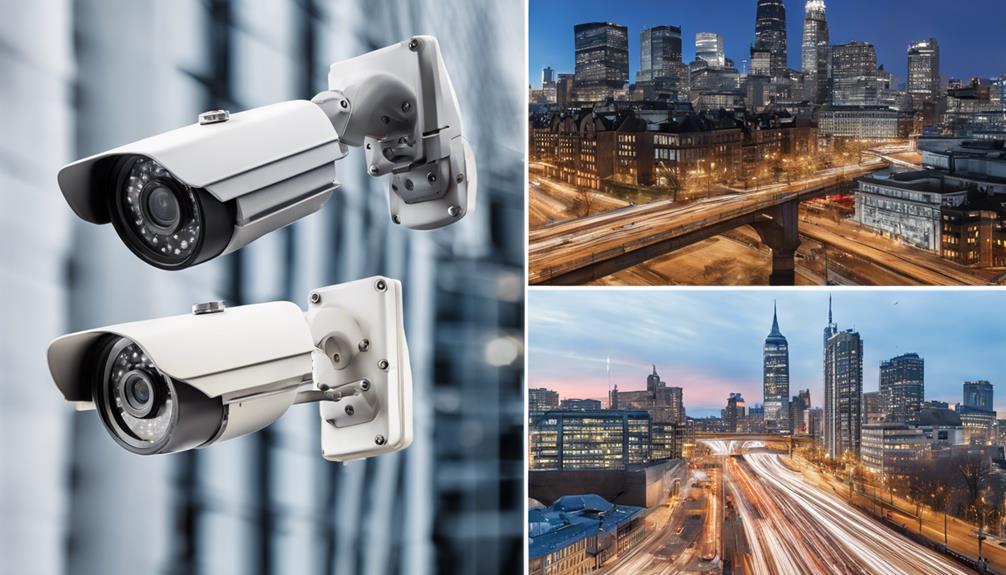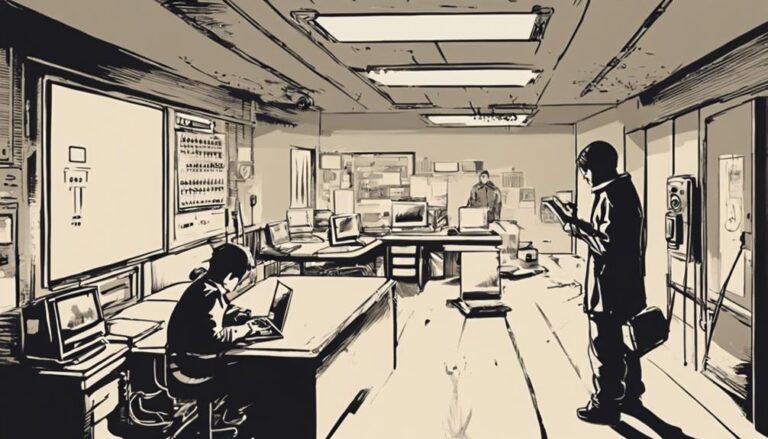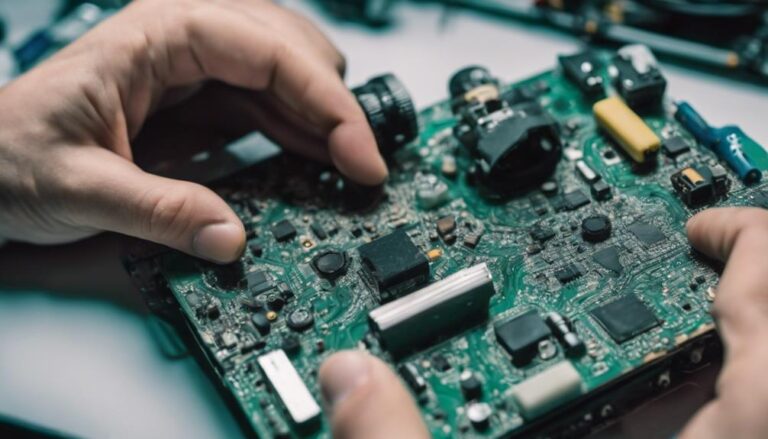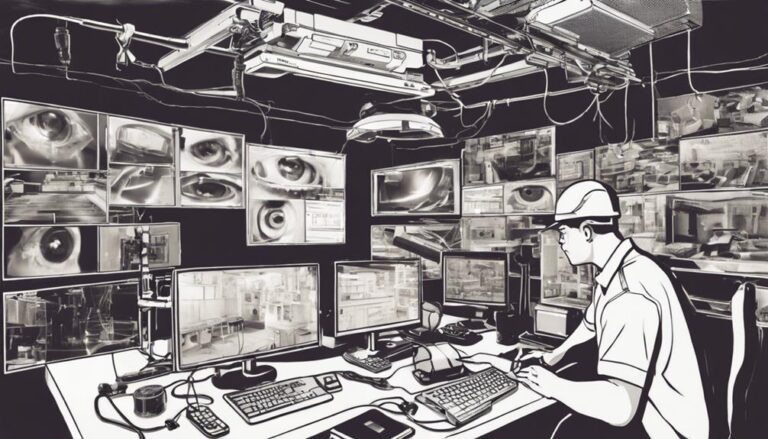When comparing HDCVI and IP technologies for surveillance, you’ll find key differences. HDCVI transmits high-definition video over existing coaxial cables, making installation simple and cost-effective. It offers low latency and supports up to 4MP resolution but lacks advanced features like remote access. On the other hand, IP technology uses internet protocols for video transmission, allowing for greater flexibility and higher resolutions. It offers remote access and scalability but comes with higher upfront costs. Consider your security needs and existing infrastructure to choose the right system. To explore these options further, you’ll uncover valuable insights and tips.
Overview of HDCVI Technology
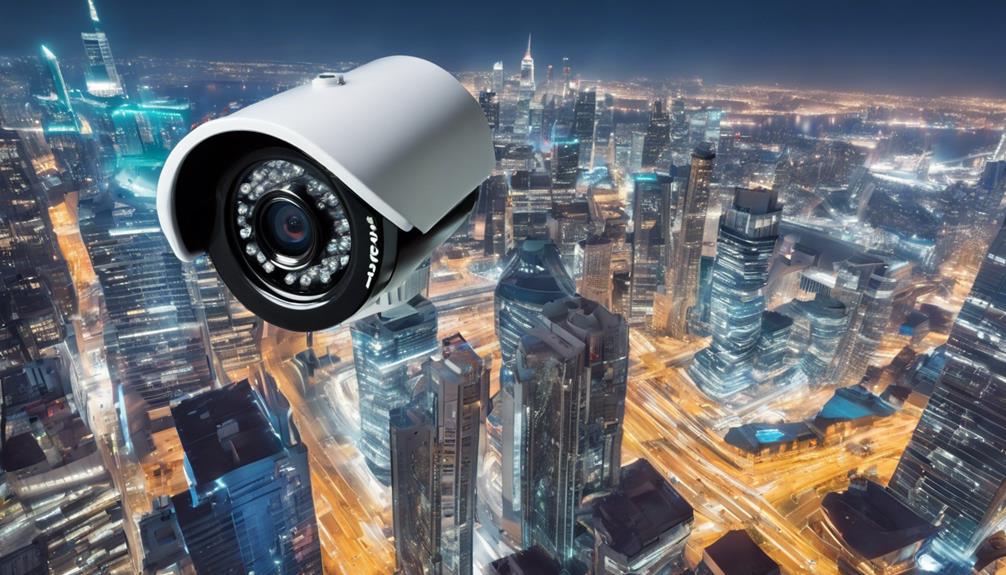
When it comes to surveillance solutions, HDCVI (High Definition Composite Video Interface) technology stands out for its simplicity and efficiency. This technology allows you to transmit high-definition video over coaxial cables, which means you can leverage existing wiring without needing a complete overhaul. One of the key HDCVI advantages is its ease of installation and cost-effectiveness, making it perfect for those who want to maintain a budget while upgrading their security systems.
Another significant advantage is the low latency and real-time monitoring capabilities, ensuring you get immediate feedback from your surveillance setup. Plus, HDCVI supports long-distance transmission, so you can place cameras far from the recording device without losing quality.
However, HDCVI does have some limitations. It’s less flexible compared to IP technology, as it typically doesn’t support advanced features like remote access and cloud connectivity. Additionally, while it provides excellent video quality, it may not match the resolution capabilities of higher-end IP systems. Understanding these HDCVI limitations helps you make informed decisions about your surveillance needs, ensuring you choose the right solution for your specific requirements.
Overview of IP Technology
While HDCVI offers a straightforward approach to surveillance, IP technology takes things further by utilizing internet protocol networks for video transmission. This advancement allows you to enjoy several benefits that enhance your surveillance experience.
Here’s what sets IP technology apart:
- Wireless Connectivity: You can set up your cameras without the hassle of running cables, making installation quick and flexible.
- Remote Access: With IP technology, you can monitor your security feeds from anywhere, using your smartphone or laptop. This level of freedom means you’re always in control.
- Higher Resolution: IP cameras typically provide better video quality, allowing you to capture clearer images, which is essential for identifying faces and details.
- Scalability: IP systems can easily expand as your needs grow. Adding more cameras is simple, whether you’re extending your coverage or upgrading your setup.
Key Features of HDCVI
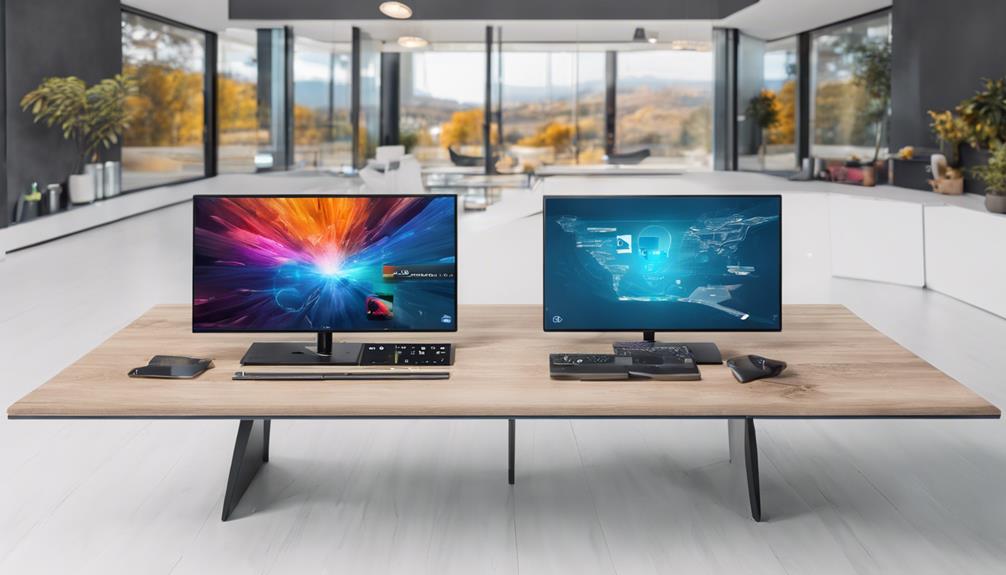
When considering HDCVI, you’ll find that it offers high-definition video quality, making your surveillance footage clearer and more detailed. Plus, the installation process is cost-effective, allowing you to save on both time and money. These key features make HDCVI a compelling choice for your security needs.
High Definition Video Quality
HDCVI technology greatly enhances video quality, making it a popular choice for surveillance systems. With its advanced capabilities, you can expect exceptional video resolution and image clarity that’ll meet your security needs effectively. Here are some key features that set HDCVI apart:
- High Resolution: HDCVI supports resolutions up to 4MP, providing clear and detailed images.
- Low Latency: This technology guarantees real-time video transmission, meaning you won’t miss any critical moments.
- Long-Distance Transmission: You can transmit HD video over coaxial cables up to 500 meters without losing quality.
- Compatibility: HDCVI systems are often compatible with existing analog infrastructure, allowing for seamless upgrades.
Using HDCVI, you gain the freedom to monitor your surroundings with confidence, knowing that the video quality is exceptional. You’ll appreciate how image clarity can make the difference in identifying faces or license plates. With these features, HDCVI truly stands out in the world of surveillance technology, guaranteeing that you have the best tools for your security needs.
Cost-Effective Installation Process
Considering budget constraints, the cost-effective installation process of HDCVI systems is a significant advantage for many users. Unlike IP systems, which often require complex networking setups, HDCVI allows you to use existing coaxial cables. This flexibility in wiring options means you can upgrade without extensive rewiring, saving both time and money.
With HDCVI, you’ll also find that labor costs are typically lower. Since the installation process is more straightforward, you won’t need specialized technicians familiar with IP configurations. Most installers can easily work with HDCVI, which further reduces your expenses.
Additionally, HDCVI systems offer plug-and-play capabilities, making it simple to connect cameras to your DVR. This ease of use means you can get your surveillance system up and running in no time, enhancing your security without breaking the bank.
Key Features of IP Cameras
IP cameras stand out in the domain of surveillance technology thanks to their numerous advanced features. These cameras offer you a flexible and efficient way to monitor your spaces, empowering you with the freedom to keep an eye on what matters most. Here are four key features that make IP cameras a preferred choice:
- Wireless Connectivity: You can install IP cameras without the hassle of running cables, making them ideal for various environments.
- Remote Access: With built-in internet capabilities, you can access live feeds from anywhere, using your smartphone or computer.
- High-Resolution Imaging: Most IP cameras provide superior image quality, allowing you to capture detailed footage essential for identification.
- Scalability: IP systems can easily expand to include more cameras, adapting to your growing surveillance needs without major overhauls.
These features not only enhance security but also grant you the flexibility and convenience that traditional surveillance systems often lack. Embrace the power of IP cameras, and enjoy a more liberated approach to monitoring your environment.
Cost Comparison

When choosing between HDCVI and IP cameras, cost is a critical factor that can greatly influence your decision. Generally, HDCVI systems are more budget-friendly upfront. They often require less investment in infrastructure, making them appealing if you’re looking to save money while still getting quality video surveillance. The HDCVI advantages include lower equipment costs and simpler installation, especially if you’re using existing coaxial cables.
On the other hand, while IP cameras tend to be pricier initially, they offer IP flexibility that can be worth the investment. They can provide higher resolutions, advanced features, and scalability as your needs grow. This flexibility can save you money in the long run, especially if you plan to expand your surveillance system.
Ultimately, you’ll want to weigh the initial costs against the long-term benefits. If you’re on a tight budget, HDCVI might be the way to go. But if you’re seeking advanced capabilities and are willing to invest more upfront, IP cameras could be the better choice. Keep in mind your specific requirements and future plans to make the right decision for your situation.
Choosing the Right System
When choosing between HDCVI and IP systems, it’s essential to take into account compatibility with your existing equipment. You’ll also want to factor in the overall cost and installation requirements to guarantee a smooth setup. Taking these elements into account will help you make a more informed decision.
System Compatibility Considerations
Choosing the right system for your security needs involves careful contemplation of compatibility with existing infrastructure. Ensuring system integration and device interoperability can save you time and money while maximizing efficiency. Here are four key factors to reflect upon when choosing between HDCVI and IP systems:
- Existing Equipment: Assess the current devices in place. Can they work with the new system, or will you need entirely new hardware?
- Network Infrastructure: Evaluate your network’s capabilities. Is it robust enough for IP cameras, or does HDCVI fit better with your setup?
- Scalability: Think about future expansions. Will the system you choose allow for easy upgrades and additions?
- Technical Expertise: Consider your team’s familiarity with either technology. A system that aligns with your team’s skills can ease the integration process.
Cost and Installation Factors
Cost and installation considerations play an essential role in your decision-making process for security systems. When weighing HDCVI versus IP systems, you’ll need to assess your wiring options and how they fit into your overall budget considerations.
HDCVI systems often require less complex wiring, making installation quicker and potentially cheaper, especially if you’re using existing coaxial cables. This can be a significant advantage if you’re on a tight budget or want to minimize installation hassles. On the other hand, IP systems usually rely on Ethernet cables, which can offer more flexibility but may involve higher installation costs, especially if new wiring is necessary.
Also, think about ongoing costs. HDCVI systems usually have lower maintenance expenses, while IP systems may involve more complex software and hardware upkeep.
Ultimately, the best choice depends on your specific needs and financial situation. If you value straightforward installation and lower upfront costs, HDCVI may be your best bet. If you’re looking for advanced features and scalability, and you don’t mind spending a bit more, an IP system could be the way to go.
Frequently Asked Questions
Can HDCVI and IP Cameras Be Used Together in a System?
Yes, you can use HDCVI and IP cameras together in a hybrid system. Just be aware of potential compatibility issues, as integrating different technologies might require additional configuration to guarantee they work seamlessly together.
What Is the Maximum Distance for HDCVI Signal Transmission?
The maximum transmission distance for an HDCVI signal is typically up to 500 meters over coaxial cable. You’ll enjoy high-quality video over this distance without significant loss, giving you the flexibility you need for your installations.
Are HDCVI Cameras More Prone to Hacking Than IP Cameras?
You might wonder about security. HDCVI vulnerabilities can leave your system exposed, while IP security often incorporates encryption. Ultimately, the choice depends on your needs and the level of protection you desire for your surveillance.
How Do Weather Conditions Affect HDCVI and IP Cameras?
Weather conditions can greatly impact camera performance. Temperature can affect image quality, while humidity can lead to condensation and damage. It’s crucial to take these factors into account when choosing outdoor surveillance equipment for ideal results.
What Type of Cabling Is Required for HDCVI Installations?
You wouldn’t believe how important cabling is for installation requirements! High-quality coaxial cables are essential; they guarantee signal quality remains excellent, preventing any frustrating interruptions. Choose wisely, and your setup will thrive in any environment!
